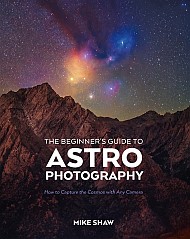Astronomy
Excerpt—The Great Shadow, by Susan Wise Bauer
In an exclusive excerpt of her new book The Great Shadow, historian Susan Wise Bauer explores how sickness is distinct from injury and has shaped the way we think about ourselves and our world
Jared Isaacman Confirmed to Head NASA at Pivotal Moment for the Space Agency
Billionaire Jared Isaacman is taking the reins at NASA at a challenging time for the space agency, as it faces budget cuts and technical hurdles that could scuttle its most ambitious missions
Scientists Are Baffled by This Bizarre Lemon-Shaped Exoplanet
Astronomers using the James Webb Space Telescope have discovered a bizarre-looking exoplanet that defies explanation
New Views of Saturn’s Moon Titan and Jupiter’s Moon Europa Complicate Ocean Worlds Theory
Oceans hiding within the crusts of distant moons are tantalizing targets for scientists looking for life beyond Earth
New Radar Data Chills Prospects of a Subglacial Lake on Mars
There could be liquid water trapped under the southern polar cap of Mars. But new observations suggest otherwise.
The post New Radar Data Chills Prospects of a Subglacial Lake on Mars appeared first on Sky & Telescope.
Massive Stars Make Their Mark in Hubble Image
Strange lemon-shaped exoplanet defies the rules of planet formation
Strange lemon-shaped exoplanet defies the rules of planet formation
Comet 3I/ATLAS Has A Green Glow In New Color Images From Gemini North
Gemini North captured new images of Comet 3I/ATLAS after it reemerged from behind the Sun on its path out of the Solar System. The data were collected during a Shadow the Scientists session — a unique outreach initiative that invites students around the world to join researchers as they observe the Universe on the world’s most advanced telescopes.
Chronic fatigue syndrome seems to have a very strong genetic element
Chronic fatigue syndrome seems to have a very strong genetic element
ESA's XMM-Newton Examines Comet 3I/ATLAS Prior to Closest Earth Passage Friday
Everyone’s favorite interstellar comet posed for one more portrait recently. The European Space Agency’s XMM-Newton mission nabbed 3I/ATLAS on December 3rd from about 283 million kilometers distant. This comes as the comet is set to make its closest passage versus Earth this coming Friday, on December 19th.
Scientists Denounce Trump’s Plan to Kill Crucial Atmospheric Science Center
The U.S. government is dismantling the National Center for Atmospheric Research, jettisoning key climate science projects in the process
Proba-3 fills the solar observation gap
It has been a busy year for the European Space Agency’s Proba-3 mission. The satellite duo has already created more than 50 artificial solar eclipses in orbit since the mission operations began less than a year ago. The resulting data confirm Proba-3's ability to provide the missing puzzle piece in our observations of the Sun's enigmatic atmosphere – the corona.
Why Most Exoplanets Are Magma Worlds
In astronomy, there is a concept called “degeneracy”. It has nothing to do with delinquent people, but instead is used to describe data that could be interpreted multiple ways. In some cases, that interpretation is translated into exciting new possibilities. But many times, when that happens, other, more mundane explanations are ignored for the publicity that the more interesting possibilities provide. That seems to have been the case for many “sub-Neptune” exoplanets discovered recently. Some theories have described them as Hycean worlds - worlds that are filled with water oceans or ice. But a new paper from Robb Calder of the University of Cambridge and his co-authors shows that, most likely, these planets are almost all made of molten lava instead.
Cosmology’s Great Debate began a century ago – and is still going
Cosmology’s Great Debate began a century ago – and is still going
Strange Cosmic Blast May Be First-Ever Superkilonova Observed
The combination of a supernova and a kilonova may have produced a rare space explosion that astronomers have never seen before
Why a Critical Orca Community Is Slipping toward Extinction
A scientist, a journalist and a remarkable scent‑detecting dog race to learn what’s endangering the last southern resident orcas


